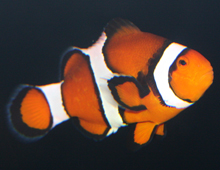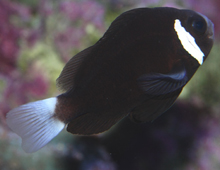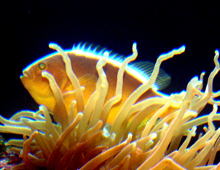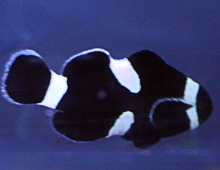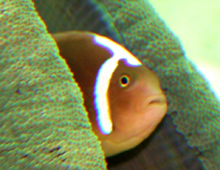
The White-capped clownfish is named for the white color mark on its forehead. The name “leucokranos” is derived from the Greek word meaning “white capped” or “white helmet”. It was discovered in 1972 in Mandang, New Guinea. As is the case in our Solomon Islands exhibit, the White capped clownfish is often associated with the Carpet anemone, Stichodactyla sp., and rarely strays far from the protection of its stinging tentacles. A thick mucous coating on its skin keeps the clownfish from being stung.

